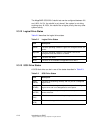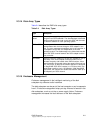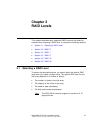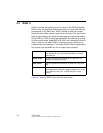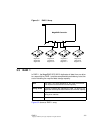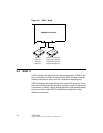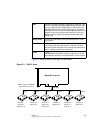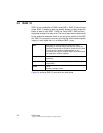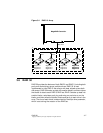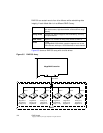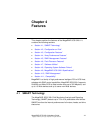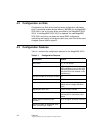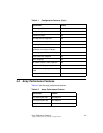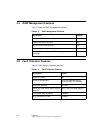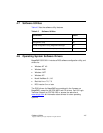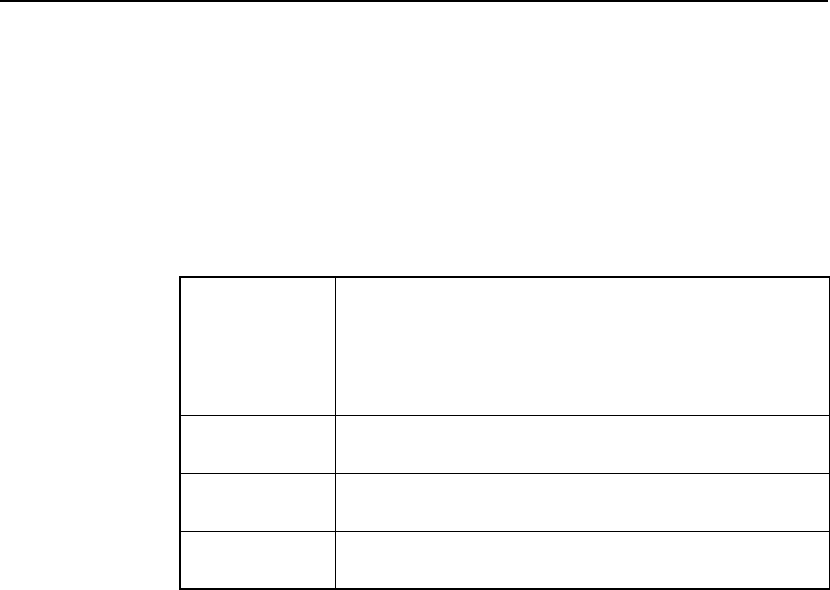
3-6 RAID Levels
Copyright © 2002 by LSI Logic Corporation. All rights reserved.
3.5 RAID 10
RAID 10 is a combination of RAID 0 and RAID 1. RAID 10 has mirrored
drives. RAID 10 breaks up data into smaller blocks, and then stripes the
blocks of data to each RAID 1 RAID set. Each RAID 1 RAID set then
duplicates its data to its other drive. The size of each block is determined
by the stripe size parameter, which is set during the creation of the RAID
set. RAID 10 can sustain one to four drive failures while maintaining data
integrity, if each failed disk is in a different RAID 1 array.
Figure 3.4 shows a RAID 10 array with four disk drives.
Uses Works best for data storage that must have 100%
redundancy of mirrored arrays and that also needs the
enhanced I/O performance of RAID 0 (striped arrays). RAID
10 works well for medium-sized databases or any
environment that requires a higher degree of fault tolerance
and moderate to medium capacity.
Strong Points Provides both high data transfer rates and complete data
redundancy.
Weak Points Requires twice as many drives as all other RAID levels
except RAID 1.
Drives 4 to 18
Must be a multiple of two.



